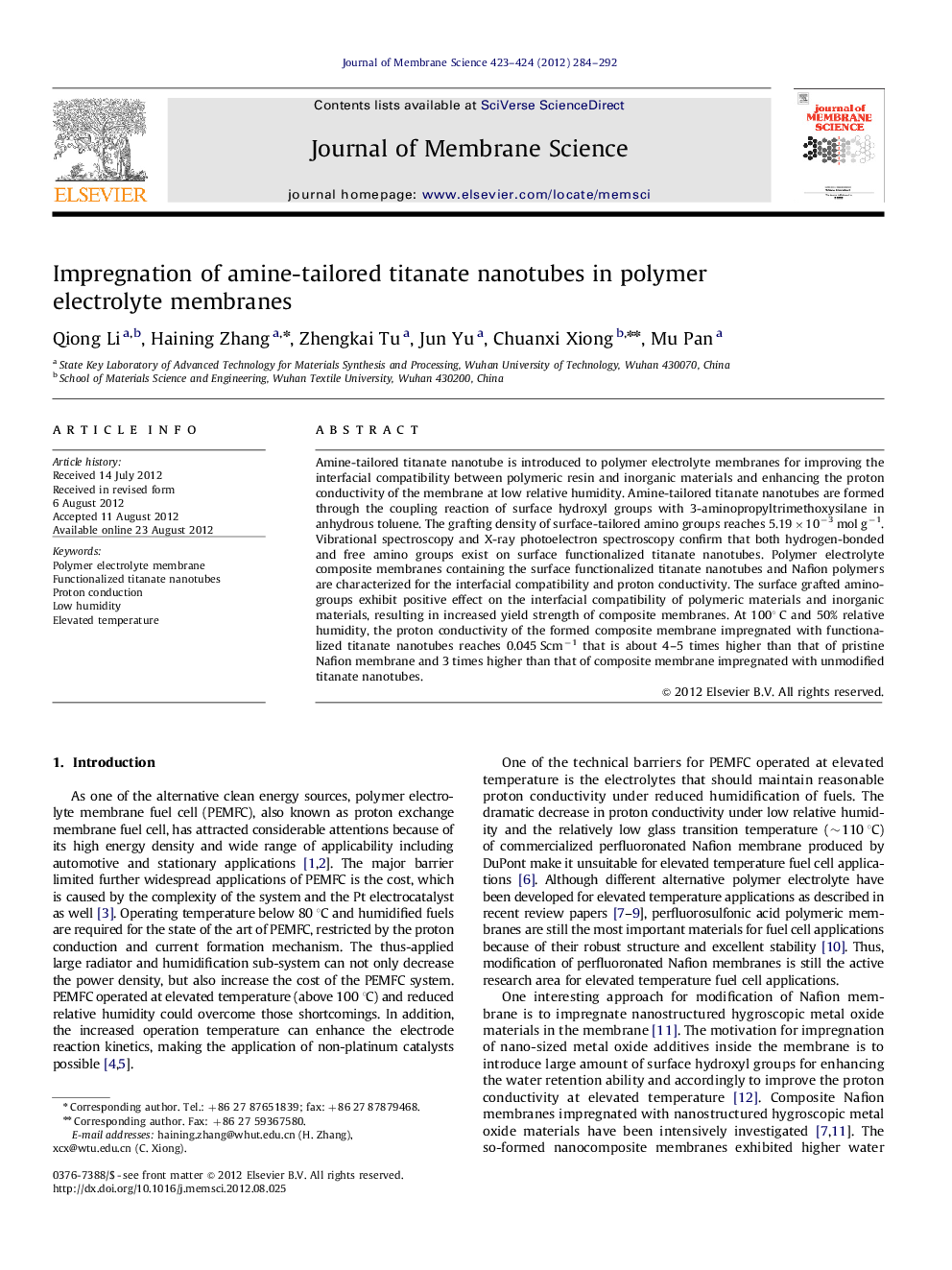| Article ID | Journal | Published Year | Pages | File Type |
|---|---|---|---|---|
| 634817 | Journal of Membrane Science | 2012 | 9 Pages |
Amine-tailored titanate nanotube is introduced to polymer electrolyte membranes for improving the interfacial compatibility between polymeric resin and inorganic materials and enhancing the proton conductivity of the membrane at low relative humidity. Amine-tailored titanate nanotubes are formed through the coupling reaction of surface hydroxyl groups with 3-aminopropyltrimethoxysilane in anhydrous toluene. The grafting density of surface-tailored amino groups reaches 5.19×10−3 mol g−1. Vibrational spectroscopy and X-ray photoelectron spectroscopy confirm that both hydrogen-bonded and free amino groups exist on surface functionalized titanate nanotubes. Polymer electrolyte composite membranes containing the surface functionalized titanate nanotubes and Nafion polymers are characterized for the interfacial compatibility and proton conductivity. The surface grafted amino-groups exhibit positive effect on the interfacial compatibility of polymeric materials and inorganic materials, resulting in increased yield strength of composite membranes. At 100° C and 50% relative humidity, the proton conductivity of the formed composite membrane impregnated with functionalized titanate nanotubes reaches 0.045 Scm−1 that is about 4–5 times higher than that of pristine Nafion membrane and 3 times higher than that of composite membrane impregnated with unmodified titanate nanotubes.
graphical abstractFigure optionsDownload full-size imageDownload high-quality image (253 K)Download as PowerPoint slideHighlights► Membranes containing Nafion and amine-modified titanate nanotubes are formed. ► Great interfacial compatibility of the formed membranes was observed. ► The formed membranes show good proton conductivity at 100 °C and 50% humidity.
